Imagine waking up, stretching, and realizing your office is just a few steps away. The commute is non-existent, the coffee is just how you like it, and your favorite playlist is on. Sounds idyllic, doesn’t it? Yet, for many remote workers, this dream can quickly become a boundaryless blur of work and home life.
Without clear remote work boundaries, professional and personal time lines become as foggy as a misty morning. But fear not, for you can master these boundaries and regain your sanity.
Understanding Remote Work Boundaries
The concept of remote work boundaries is akin to setting up invisible fences that help maintain a healthy balance between your professional obligations and personal life.
These boundaries are not just about keeping work at bay; they are about protecting your mental health and ensuring a sustainable work-life balance. Without them, the risk of burnout looms large, turning what should be a flexible and empowering setup into a source of stress.
The Importance of Setting Boundaries
Setting boundaries is crucial because it establishes a clear demarcation between work and personal life. Think of boundaries as the walls of a fortress that protect your mental and emotional well-being.
They ensure you are not overwhelmed by the constant demands of work, allowing you to recharge and return with renewed vigor. Defining when work starts and ends creates a space where personal growth and relaxation can flourish.
To set effective boundaries, identify what matters most to you outside of work. Whether it’s family time, hobbies, or self-care, prioritize these aspects and make them non-negotiable parts of your day.

Common Challenges Faced by Remote Workers
Remote workers often grapple with unique challenges that can strain their work-life balance. The absence of a physical office can lead to extended work hours, making it difficult to “switch off.”
Many find themselves answering emails late into the night or working through weekends, driven by the fear of not appearing productive enough. This lack of structure can also lead to feelings of isolation and disconnection from colleagues, further exacerbating stress levels.
The Impact of Blurred Lines on Mental Health
When the lines between work and home life blur, the impact on mental health for remote workers can be profound. Continuous exposure to work-related stress without adequate downtime can lead to burnout, anxiety, and even depression.
The constant pressure to be “on” can erode the quality of personal relationships and leave little room for self-care. Therefore, maintaining distinct boundaries is beneficial and essential for long-term mental well-being.

Practical Strategies for Establishing Boundaries
Creating effective remote work boundaries requires a combination of physical, technological, and communicative strategies. Remote workers can create a more balanced and fulfilling daily routine by implementing these practices.
Creating a Dedicated Workspace
Creating a dedicated workspace is one of the most effective ways to establish boundaries. This space acts as a physical cue, signalling when it’s time to work and when it’s time to relax.
Whether it’s a home office or a specific corner of your living room, ensure it’s equipped with everything you need to minimize distractions and enhance productivity.
Invest in ergonomic furniture to make your workspace comfortable. A supportive chair and a well-organized desk can significantly improve your ability to focus and work efficiently.
Setting Regular Work Hours
Establishing regular work hours is another critical strategy. Just as you would in a traditional office setting, define a start and end time for your workday.
Communicate these hours to your team to manage expectations and avoid work encroaching into your time. Consistency in your schedule helps reinforce the boundary between work and leisure.
| Task | Time |
|---|---|
| Morning Routine | 8:00 AM – 9:00 AM |
| Work Hours | 9:00 AM – 5:00 PM |
| Evening Wind Down | 5:00 PM – 6:00 PM |

Using Technology to Enforce Boundaries
Technology can be both a boon and a bane for remote workers. On one hand, it facilitates seamless communication; on the other, it can tether you to work around the clock.
Use tools like calendar apps to schedule breaks and focus times. Set up auto-responses for emails after hours to signal your unavailability, and leverage communication platforms to indicate when you’re offline.
Communicating Your Availability
Clear communication is vital in maintaining boundaries. Let your colleagues know your working hours and preferred methods of communication.
This transparency helps manage expectations and reduces the likelihood of being disturbed during personal time. Setting these expectations upfront fosters a culture of respect for each other’s boundaries.
Taking Breaks and Prioritizing Self-Care
Regular breaks and self-care are not indulgences; they are necessities for maintaining a healthy work-life balance. Prioritizing these aspects ensures that you remain mentally and physically fit to tackle remote work demands.

The Importance of Regular Breaks
Breaks are essential for maintaining productivity and preventing burnout. Short, frequent breaks can help refresh your mind, while longer breaks, like lunch hours, provide an opportunity to disconnect and recharge.
Use these breaks to step away from your workspace and engage in relaxing and rejuvenating activities.
Incorporating Exercise into Your Day
Exercise is a powerful antidote to the sedentary nature of remote work. Incorporate physical activity into your daily routine, whether it’s a morning jog, a yoga session, or a quick walk during your lunch break. Exercise boosts endorphins, enhances mood, and improves overall health, making it an integral part of a balanced lifestyle.
Schedule exercise just like any other important meeting. Treat it as a non-negotiable part of your day to ensure it becomes a consistent habit.

Finding Social Connections in a Remote Environment
Social connections are vital for mental well-being, yet remote work sometimes feels isolating. Cultivating meaningful relationships, even in a virtual environment, is crucial for maintaining a sense of belonging and support.
Combating Isolation Through Communication
Isolation is a common challenge for remote workers, but it can be mitigated through intentional communication. Regular check-ins with colleagues, virtual coffee breaks, and team-building activities can foster a sense of camaraderie.
These interactions enhance professional relationships, provide emotional support, and reduce feelings of loneliness.
Building a Virtual Community
Building a virtual community involves more than just work-related interactions.
Engage in social activities, join interest-based groups, or participate in online forums to connect with like-minded individuals. These communities offer a platform to share experiences, seek advice, and form friendships that extend beyond work.

Fostering Work-Life Balance for Mental Health
A strong work-life balance is the cornerstone of mental health. Employers and employees play a role in cultivating an environment supporting this balance, ensuring long-term well-being and productivity.
The Role of Employers in Supporting Boundaries
Employers have a significant role in supporting remote work boundaries. Employers can create a supportive environment by promoting a culture that values work-life balance, providing resources for mental health, and respecting employees’ time. Encouraging regular feedback and open communication further reinforces these boundaries.
Encouraging Time Off and Mental Health Days
Time off is crucial for maintaining mental health. Encourage employees to take vacations and mental health days without guilt. These breaks provide much-needed respite, allowing individuals to return to work refreshed and more productive. By normalizing time off, companies demonstrate their commitment to employee well-being.
Plan your vacations and communicate them to your team. This helps manage the workload and sets a positive example for others to follow.

Maintaining a Healthy Work-Life Balance
Achieving a healthy work-life balance is an ongoing process that requires reflection and adjustment. Regularly assessing your work patterns and making necessary changes can ensure that your professional life complements rather than competes with your personal life.
Reflecting on Your Work Patterns
Regular reflection on your work patterns can reveal areas where boundaries may slip. Take time to evaluate how you spend your workday, identify stressors, and assess whether your current setup aligns with your personal goals. This introspection is key to maintaining a balance that works for you.
Adjusting Your Approach to Remote Work
As your circumstances and priorities evolve, so should your approach to remote work. Be open to adjusting your routines, experimenting with new strategies, and seeking support when needed. Flexibility and adaptability are essential in navigating the dynamic landscape of remote work.





